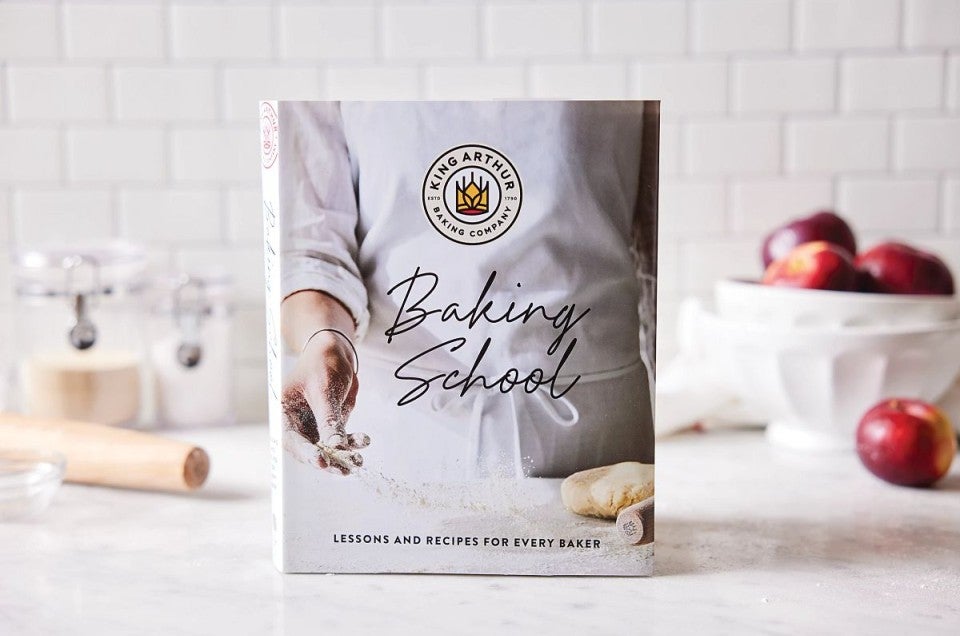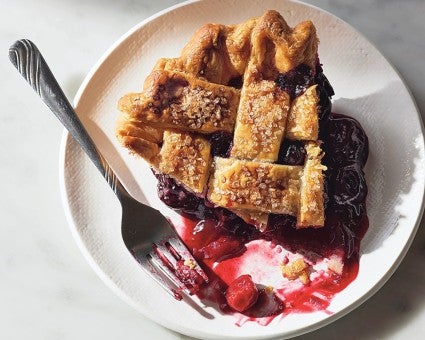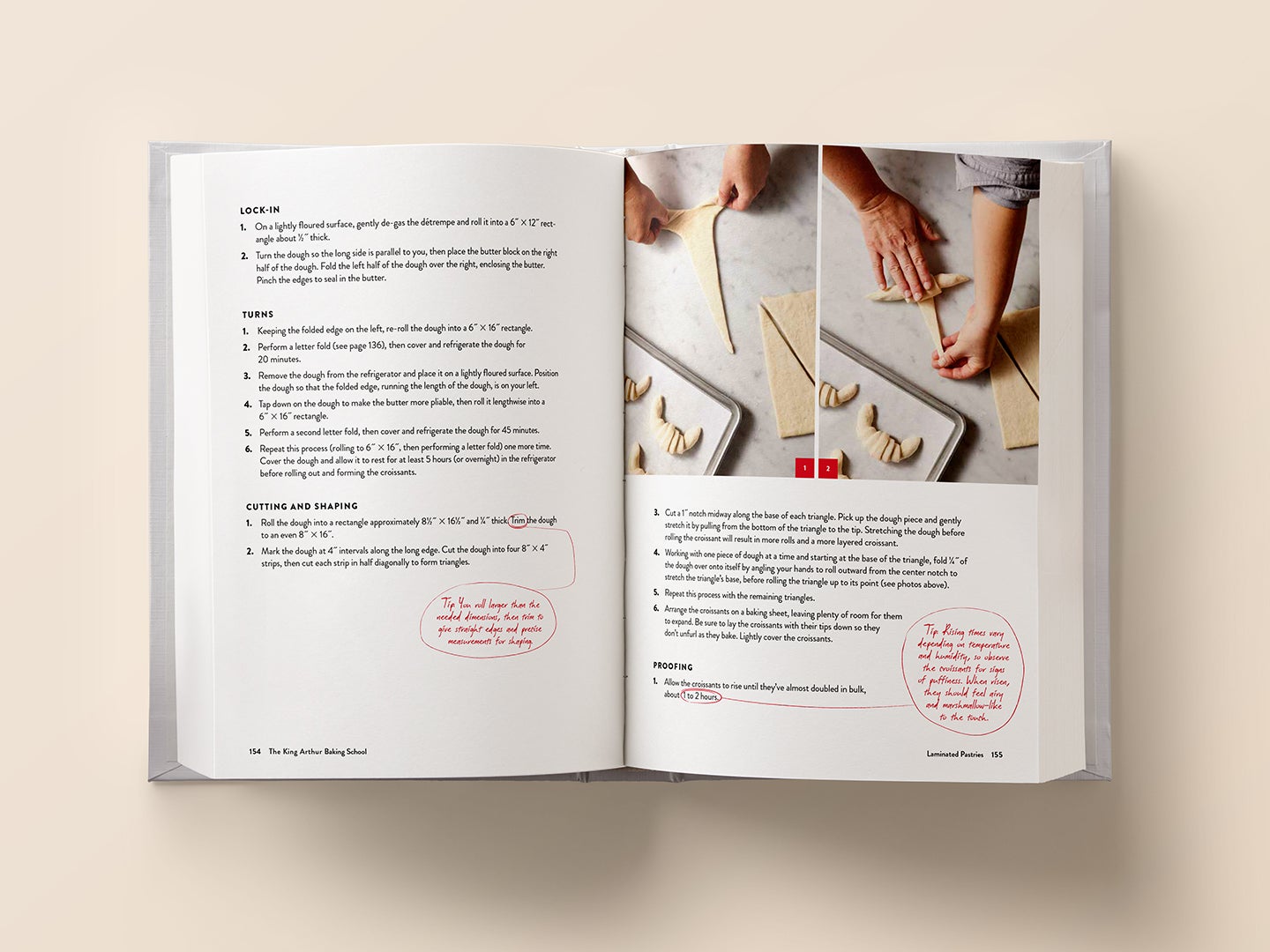Introducing our new cookbook: The King Arthur Baking School
It’s packed with flawless recipes, gorgeous photos, and 20 years' worth of Baking School wisdom.


Cookbooks are deceptive. If there’s a ton of obvious work that goes into them (the recipe development, the photographs), there’s even more less obvious work: Captions need to be written, pages need to be designed, and all of those recipes need to be tested and tasted (lucky work, but trust me, it can get ugly).
Today King Arthur releases its fifth cookbook, The King Arthur Baking School: Lessons and Recipes for Every Baker, and like all cookbooks, this one reflects years of work by writers, editors, designers, recipe developers, and photographers. But Baking School has more years of work packed into it than most, because it’s filled with the decades of knowledge we’ve acquired — and instilled — at our baking schools in Vermont and Washington State. That knowledge is what makes Baking School not just a book, but an education.
Here's what’s in the curriculum:
The breadth of our Baking School is captured in the book in seven chapters: Yeast Breads, Sourdough, Laminated Pastries, Pies and Tarts, Cookies, Quick Breads, and Cakes. This ensures there’s a bake for every occasion and a recipe for every skill level. Looking for a simple snack cake for a Sunday afternoon? The Cocoa Streusel Coffeecake on page 314 has you covered. Need a special dessert for a dinner party? Turn to page 232 for the S’mores Tart.

The recipes in each chapter are ordered from simplest to most complex. In the cookie chapter, this trajectory starts with drop cookies and ends with classic macarons. Like the final recipe of every chapter, the macarons are a Master Class: an advanced recipe by a legendary guest instructor (in this case En-Ming Hsu) that spans many pages to give you as much detail and support as an in-person class would. Other Master Classes in the book include kouign amann, sticky toffee pudding, a sourdough miche, and the grandest recipe in the book: Gesine Bullock-Prado’s Gâteau St. Honoré.
The recipes in Baking School are annotated by handsome handwriting in red pen. In a live King Arthur Baking School class, you’d jot down these notes yourself (perhaps with less perfect penmanship), but here we made them for you. (One of my favorites is a note about the word “tacky” when applied to dough. “When we say ‘tacky,’” the note reads, “imagine the feel of the back of a sticky note.”) Tips like this are one way the book makes you a better baker; the many sidebars and “Class Notes” pages, which go into greater detail on topics such as freezing dough and pulling off letter folds, are two more.

Our first Baking School opened in Vermont in 2000. From the beginning, the school developed its own recipes, which were designed to teach key lessons (and fit into the constraints of a one- or two-hour class). Over the years these recipes have been taught — and baked by thousands of students — on repeat. It’s safe to say that very few cookbooks have recipes that were put to the test so thoroughly, and it shows — I’ve been baking from this book for weeks now, and whether it was the tender blueberry muffins, the crispy sourdough waffles, or the unfathomably flaky rough puff, every recipe has been a 10/10.
Bring our Baking School home and order your copy of The King Arthur Baking School: Lessons and Recipes for Every Baker.
Cover photo by Kristin Teig.

